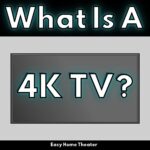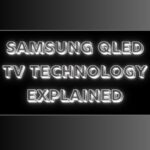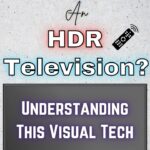OLED TV Technology Explained
OLED TV Technology Explained

It’s interesting how fast technology can advance, especially when it comes to TVs.
I mean think about it, how many television changes do you remember from just the last few years?
First we had the revolutionary change from standard definition to high definition; relatively recent at that.
Everyone thought that this was the pinnacle of display technology, and that there was no way anything was going to top this.
But you know what happened?
That very thing.
Just a few years later, 4K formats were introduced with the capability of offering visual clarity 4 times that of HD.
This was mind-blowing because it was improving upon something that already looked incredible.
Then came HDR, then expanded color palettes, etc.
Industries from there kept advancing, with one big innovation after another.
But one of the more interesting creations is none other than OLED!
So like the title implies, this will be an article on OLED TV technology explained, and why I think there’s major visual benefits when it comes to this technology.
What exactly is OLED?
OLED stands for Organic Light Emitting Diode, and functions differently than the LCD (liquid Crystal Display) TV’s that exist today.
The biggest change compared to LCD, LED, or QLED TVs, is an OLED TV doesn’t use a backlight or bulbs.
What it does instead to produce a picture, is pass an electrical current through a special type of chemical which then shines light itself.
This allows for a few advantages; one of which is its ability of having an infinite contrast ratio.
Just as a refresher, a contrast ratio is the difference between the lightest and darkest elements on the screen.
The bigger the difference (or contrast) between light and dark elements that screen can create, the better the picture quality.
So by having one that’s technically infinite, it’s able to provide great visual benefit with content.
Before we cover those though, I wanted to give a more detailed, but still general idea of how it works since it may help give more context on why an OLED TV can do what it does.
Plus it can get pretty complicated all things considered.
How An OLED TV Works
So within every OLED pixel, there exists a thin film that’s made of carbon.
This film is divided into 2 different sections called the emissive layer, and the conductive layer.
The reason it’s split this way is because it allows a lot more efficiency when an electrical current flows through.
Whether each layer is situated on top or the bottom depends on how the OLED was made since either way can be viable.
On the top and bottom of those layers are a different type of electrode called an anode, and a cathode.
The anode is a conductor that has a positive charge, and sits in the conductive layer.
The cathode is negative, and sits in the emissive layer.
You might think that by being emissive, that layer would be the one giving off electrons but it’s actually the one that accepts them.
So, how does this produce a picture?
Well it starts when an electrical current flows from the cathode to the anode.
When electrons from the cathode are sent to the emissive layer, the simultaneous lack of electrons in the conductive layer causes holes.
These holes, which are sent by the anode to the conductive layer, then travel to the emissive layer.
These electrons recombine with these holes, and results in an access of energy given off in the process.
This extra energy is then given off as light.
Whatever material is in the emissive layer will pretty much dictate the color of light shown.
Multiply that by a few million pixels and voila, you have a beautiful picture.
Now believe it or not, that’s the simple explanation, but it’s really the crux of what’s important to understand.
https://en.wikipedia.org/wiki/OLED
There’s also two different types of OLED called PMOLED (Passive Matrix OLED) and AMOLED (Active Matrix OLED).
PMOLED works by turning on different rows of pixels at varying times.
AMOLED works by turning on and off individual pixels.
The latter is what’s often preferred by TV manufacturers because it allows for a better looking presentation at that larger scale.
From all of this, what one could extrapolate is there’s probably some advantages to an OLED screen.
I mean something that drastically different probably has to have some kind of merit, right?
You certainly wouldn’t be wrong in that assertion.
Here’s what you need to know in case you’re interested one of these displays.
The Advantages With An OLED TV
1. Infinite Contrast Ratio
With more common traditional television sets, a backlight within illuminates all of the pixels at once.
Though it depends on the display and its settings, this can sometimes introduce light blooming.
While some techniques like local dimming may help reduce blooming in some capacity, the pixels are still mostly active at once (unless it’s a Micro LED TV)
Now with OLED, each individual pixel is turned on & off only when needed.
This essentially makes the difference between the lightest and darkest elements on screen infinite, meaning that contrast ratio is infinite.
What this ultimately means for you is a picture quality that’s incredible.
Having seen them in person, they’re fantastic in my opinion.
2. More Accurate Colors
Another rather interesting thing about OLED TVs is that they include an extra pixel completely.
Rather than the standard RGB (red, green, blue) layout, it includes an additional white pixel.
This difference allows for a picture to not only be more accurate, but lets it show even more colors all together.
This would result in an image that’s impressively more dynamic than what was previously possible.
3. Better Viewing Angles
Ever sit off to the side of your TV in the living room and notice how different it looks?
Well better viewing angles are a huge benefit from this tech, without content looking washed out when not sat in front of it.
4. Energy Efficient
So yet another plus about being able to toggle pixels at will is just that, they can turn off completely.
This means that the pixels not being used end up using less electricity, and thus, end up saving you power. Energy efficiency is a really attractive prospect, and that’s exactly what you’re getting here.
5. Fast Response Times For Gaming
A really cool benefit to OLED TVs is because of their fast pixel switching, their response times to inputs are really fast — giving them nearly zero input lag. This can be great for gaming where being able to react quickly is important.
Disadvantages Of OLED
While there are some really awesome things to love, there are potential downsides to be aware of as well.
1. The Blue Pixel Issue
An issue that OLEDS have, has to do with their blue pixel.
That material used tends to degrade a lot quicker than the ones used in the green, red, and white pixels.
This could mean a shorter lifespan overall.
Fortunately, improvements have been made in this regard and isn’t nearly as much of an issue.
Still this would be good to keep in mind.
2. The Possibility Of Burn In
Burn can occur when a image that’s stationary is left on the screen for an extended period of time, resulting in a ghosted version of that image on screen even after the content is changed.
Unlike the issue of a stuck pixel where it can potentially be fixed, burn in involves degradation of the pixel itself which is permanent.
This has to do with the way OLED TVs work since they use organic materials that light up from electricity instead of bulbs like an LED TV.
That means it’s not something that affects LED TVs, although those can still experience issues with their bulbs too from heavy usage and/or the brightest settings.
Luckily the possibility of burn in has been greatly reduced nowadays due to advances in the technology, durability, and materials of these TVs.
Though it’s not recommended to leave static things on screen for long periods of time for better longevity, (for any TV really) that potential issue has gotten much better.
3. Peak Brightness In HDR May Not Be As Bright
This one is a bit more nuanced since it’s another thing that like burn in, has been improved upon in recent times making it not really as much of an issue.
There used to be a larger discrepancy between peak HDR brightness when comparing an OLED with a led based TV, but recent ones can get very bright.
In fact, recent OLED TVs, similar to LED TVs, often achieve a peak brightness of well over 1000 nits in HDR which is where HDR content is mastered.
Though because technology is always advancing, a potential caveat is their maximum peak brightness may not be as bright as some newer LED TVs that can hit peak brightness of 4000 nits.
However I personally don’t find that to be an issue since 1000 nits in HDR is plenty bright, and some like the LG G4 can get much brighter than 1000 nits in HDR content.
4. OLED TVs Can Be Somewhat Hard To Manufacture
The entire process to produce one of these displays takes a while and can be somewhat complex. With that, pricing can be an element to consider compared LED TVs of a similar size.
Which One Would I Recommend In 2025?
There are some really incredible looking OLED TVs lately, making any one single recommendation difficult.
However 2 OLED televisions I think are great for 2025 are the previously mentioned LG G4, and the Samsung S95D due to their awesome HDR capabilities, wide color gamuts, and clear picture quality.
Check Availability Of LG G4
Check Availability Of Samsung S95D
The Bottom Line
The bottom line is that OLED is an incredibly innovative piece of technology that improves upon the visual experience.
While things like price have initially marred widespread adoption, industries continue to progress in ways that may eventually make that a reality.
With the display tech offering infinitely deeper blacks, and more vivid colors, it’s hard not to be excited for something like this.
Especially when considering that there’s likely to be future iterations of this tech eventually released in some capacity.
While not certain, I could see some form of it becoming the new standard in just a few years.
But I guess we’ll have to wait and see what happens.
Until next time, make it easy, keep it simple.
About Me

Jay
Hey everyone it’s nice to meet you. I'm Jay, writer & founder of the site Easy Home Theater. I've been with this hobby of home entertainment for many years now. I decided to create this site to be a helpful resource, and share everything that I've learned from personal experience with you. I also happen to be a huge gamer, lover of all things tech related, and a major fitness buff (love weightlifting)
Contact: Contact Jay
Facebook: https://www.facebook.com/Easyhometheater/
X: https://x.com/easyhometheater
Pinterest: https://www.pinterest.com/easyhometheater/pins/
Instagram: https://www.instagram.com/easyhometheater/
Followit: https://follow.it/easy-home-theater
Bluesky: https://bsky.app/profile/easyhometheater.bsky.social
6 Comments so far:
-
-
Yeah It definitely will. And hey, that’s all that really matters. I mean if you’re happy with what you currently have, then by all means stick to that.
-
-
Hey man, extensive article on OLED. Was looking for a new TV, but the OLED thing wasn’t really clear for me, thanks for explaining! Sounds pretty cool. Probably going to buy a TV with OLED screen tomorrow, thanks!
-
Hey man that’s awesome, let me know how it looks!
-
-
Really detailed but simple explanation of this OLED technology. I was looking for a new TV and never took much notice of this concept in TV technology. Back to the drawing board for me to do my research again. I will watch your site with interest! Very interesting posts. Please keep up the good work.
-
Thanks, glad you enjoyed it!
-






Hi there, good to know. I am sure this new technology is going down in price with time as well and levels as new standard. I’m excited to see one by my self. So far I have an LED screen and find it already awesome as for size and weight and picture.
Thanks for the detailed walk through.